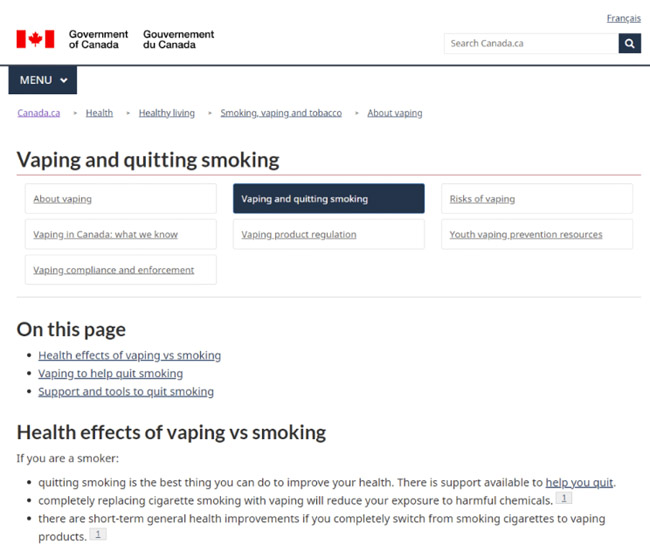Recently, David Sweanor, Chair of the Advisory Board of the Centre for Health Law, Policy and Ethics at the University of Ottawa, Canada, drew widespread attention for his presentation at the 4th Asia Harm Reduction Forum. In his presentation, David Sweanor cited progress in tobacco control in Canada, Japan, Iceland, Sweden and other countries, and confirmed that promoting harm reduction products such as e-cigarettes to smokers will have a positive impact on reducing tobacco sales and smoking rates.
David Sweanor, tobacco harm reduction expert and Chair of the Advisory Board of the Centre for Health Law, Policy and Ethics at the University of Ottawa
Many of the panelists at the forum were proponents of tobacco harm reduction strategies that reduce tobacco harms by promoting harm reduction products such as e-cigarettes and providing smokers with options to quit and reduce harm.
According to David Sweanor, the Canadian government has adopted a tobacco harm reduction strategy to drive domestic progress in tobacco control. The Canadian government’s official website cites several authoritative studies describing the potential of e-cigarettes for smoking cessation and harm reduction, and clearly states that smokers switching to e-cigarettes will reduce their exposure to harmful substances and improve their overall health. At the same time, the website also emphasizes that there is solid evidence that e-cigarettes can significantly improve the success rate of smokers in quitting.
According to the Canadian Tobacco and Nicotine Survey report, since the government adopted a tobacco harm reduction strategy and made e-cigarettes available to the public, the smoking rate among people aged 20 to 30 in Canada has dropped from 13.3% in 2019 to 8% by 2020.
In addition to Canada, David sweano previously led a survey report on changes in cigarette sales in Japan. The survey compared the trend of cigarette sales in Japan from 2011 to 2019. The results showed a slow and steady decline in cigarette sales in Japan before 2016, and a fivefold increase in cigarette sales after the popularity of harm-reducing products such as heat-not-burn.
David Sweanor believes this change represents Japan’s success in reducing tobacco harms. “Cigarette sales in Japan fell by a third in a very short period of time. This was not achieved through mandatory measures, but simply because smokers had a viable alternative to reduce harm.”
For some countries that oppose harm reduction products such as e-cigarettes, David Sweanor suggests that these countries could learn more from countries such as the United Kingdom and Sweden.
In the United Kingdom, e-cigarettes are the most popular harm reduction product for smoking cessation. The government is promoting the inclusion of e-cigarettes in health insurance, among other means, to ensure that smokers of all incomes and walks of life can use the product to quit. Similarly, Sweden, Norway and Iceland have been working in recent years to promote a shift to harm-reduction products for smokers. Among them, Iceland has also seen smoking rates drop by about 40 percent in just three years after allowing e-cigarette products to be sold.
“It is well known that people smoke for nicotine, but die from the tar. Now safer nicotine products have emerged. If countries’ regulatory policies can guide smokers to switch to harm-reducing products such as e-cigarettes and ensure that harm-reducing products are sold properly, it is expected that the public health environment will be greatly improved by this technology.” David Sweanor said.
Post time: Apr-26-2022





